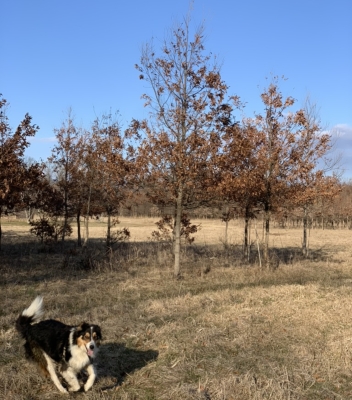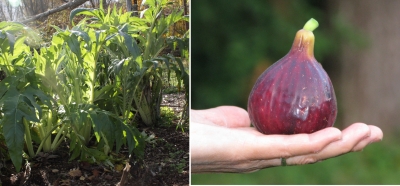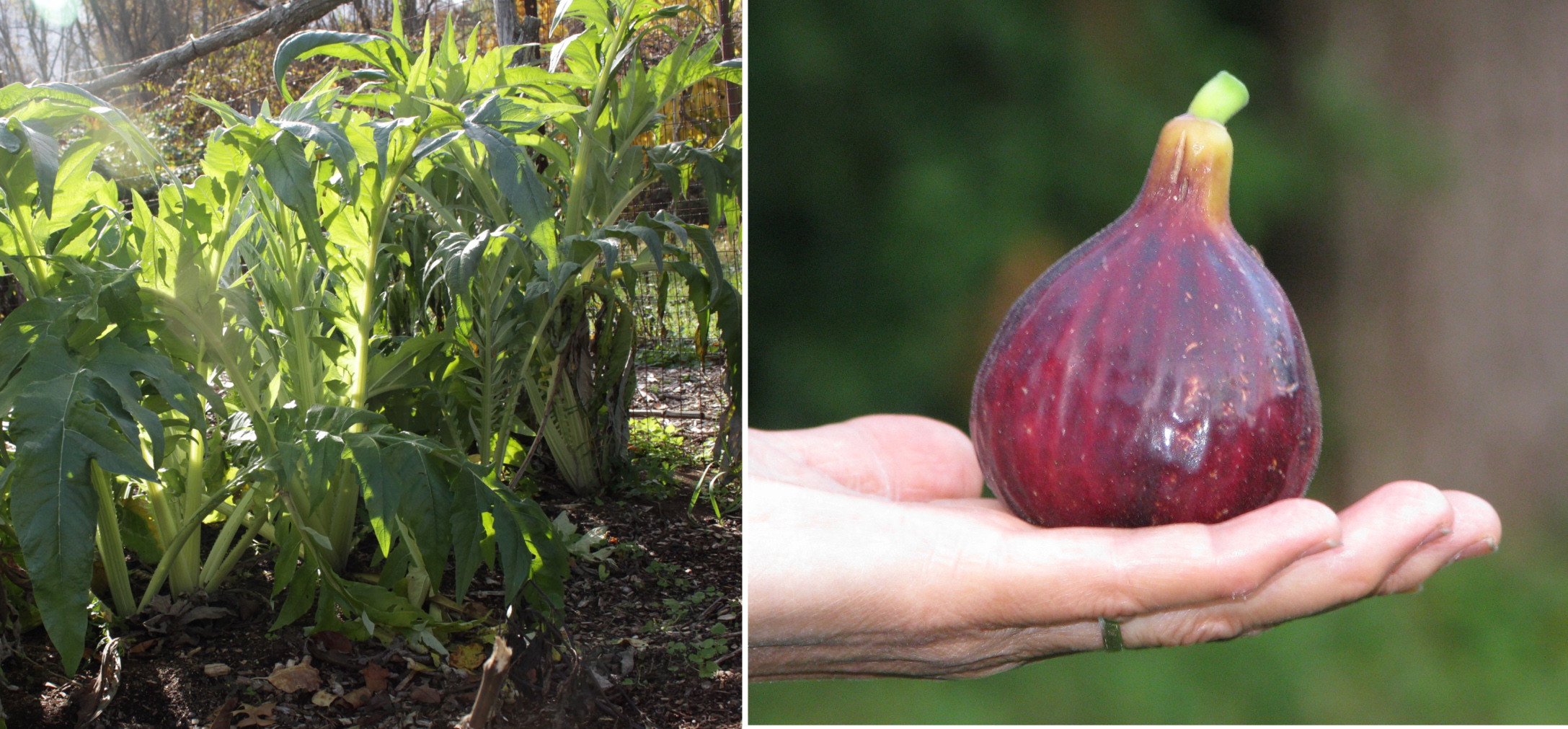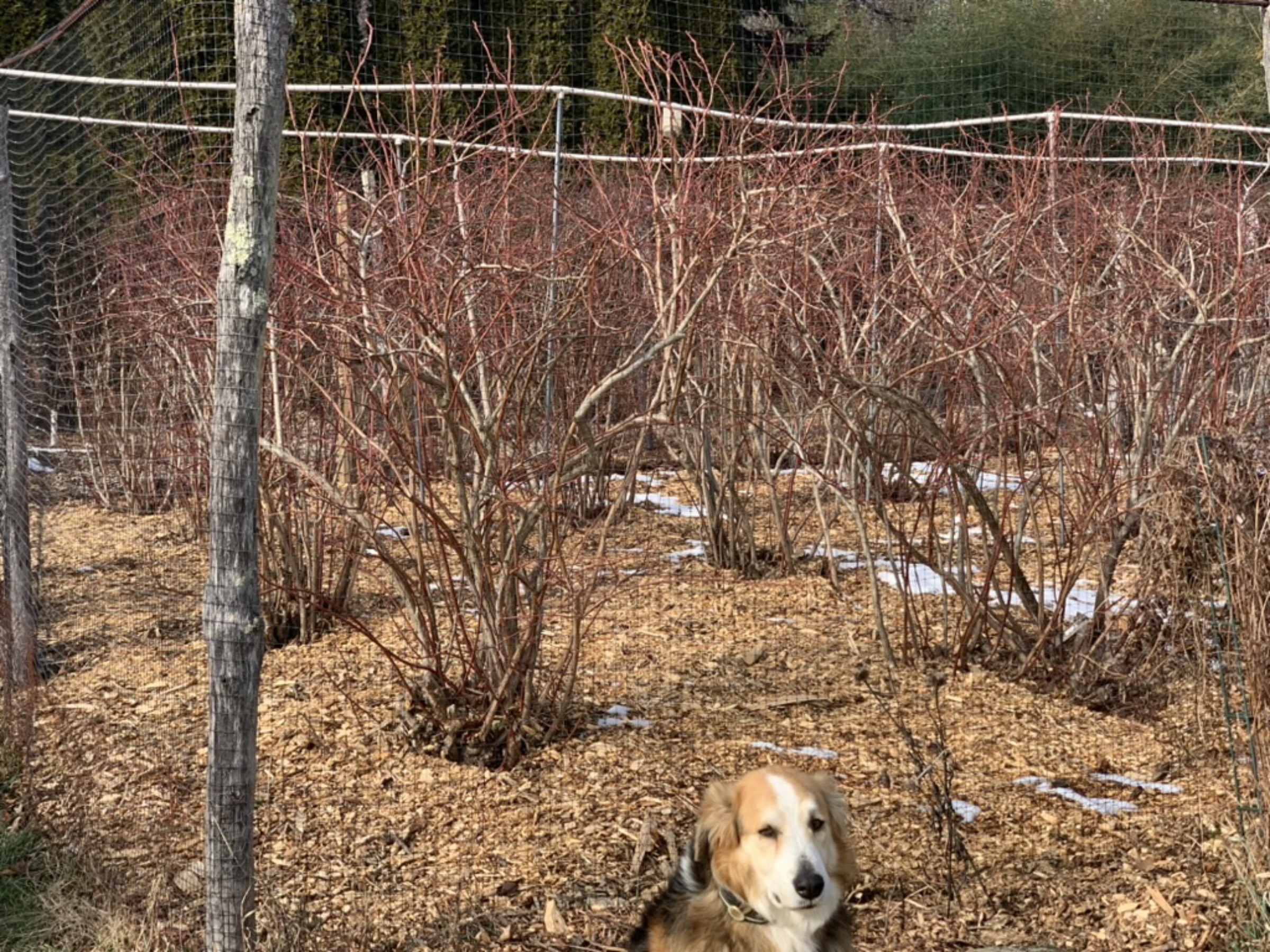BENEFITS OF IMMATURITY
/4 Comments/in Flowers, Fruit/by Lee ReichOld Skirts
Looking at trees that usually drop their leaves in winter, you might notice that some of them — especially beeches and oaks — wear skirts of foliage all winter long. I say “skirts” because if the trees were human, the leaves would all be at skirt-level. Rather than being lush and green, these skirts are dried and brown or gray, just like their counterparts on the ground.
These trees, still clinging to their leaves, aren’t out of synch with the environment. Nor does this habit reflect the effect of climate change or nighttime lighting. The oak and beech branches cling to their leaves because the branches are “juvenile,” and reluctance to drop leaves is one sign of juvenility in plants.

Juvenile oak trees
(Artificial lighting and a warming climate have been shown, though, to delay leaf drop in autumn and advance the time when leaves unfold in spring, just how much depending on the tree species and the duration and the color of the light.)
Changes with Maturity
Juvenility in plants is akin to prepuberty in humans: during this period plants grow but are incapable of sexual reproduction, that is, flowering, then setting seed. Read more
LOOKING BACKWARD, LOOKING FORWARD
/17 Comments/in Flowers, Fruit, Vegetables/by Lee ReichHere’s a backward story and a forward story.
About plants, of course. And the plants are linked in that both of them are native to the Mediterranean region. But for centuries, both plants have been grown world-wide wherever winters are mild. And, with some special attention, by enthusiast (such as me), in gardens where winters are frigid.
Perhaps you’ve already guessed the two plants. If not, they are cardoon and fig. Let’s start with the backward story, which is the one about cardoon.

Cardoon & Fig
A Florific Season in the Offing (I Know It’s not a Word)
The end of the cardoon story begins with my memory of last summer’s very bold plant whose whorl of glaucous, spiny leaves rose three feet or more above ground level. Read more
YOU NEED A PITCHFORK IN YOUR QUIVER
/6 Comments/in Gardening/by Lee ReichThe Choice is Yours
Plants occasionally need fertilizer and when they do, you can choose between using either an organic fertilizer or a synthetic (aka chemical) fertilizer. Organic fertilizers are derived from natural sources such as ground rocks, animal byproducts and manures, and plants or parts of plants. Synthetic fertilizers, in contrast, are factory made.

“Fertilized” beds in autumn
Most of the nutrition plants get from the ground is from nutrient ions (an atom or a group of atoms with an electric charge). For instance, calcium enters the root as Ca++; the two pluses are the result of the once neutral calcium atom losing two electrons. Whether a fertilizer is organic or synthetic, the form the plant eventually sees as food is an ion. People sometimes use this as a argument that it doesn’t matter to the plant whether its food source is organic or synthetic. But . . . Read more




